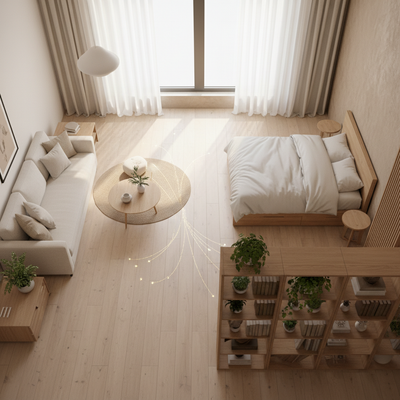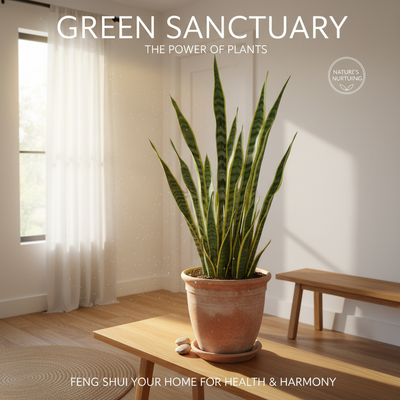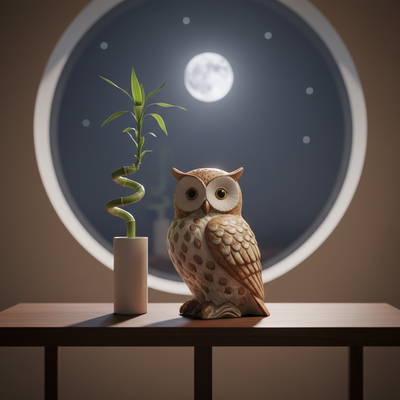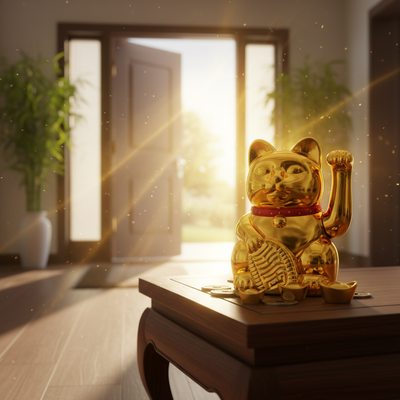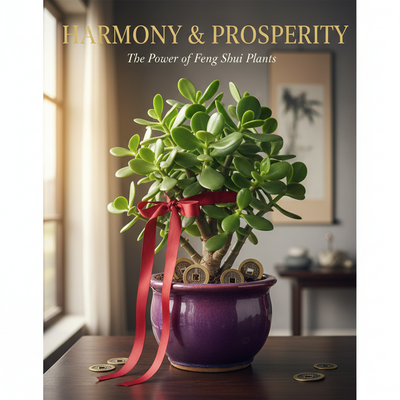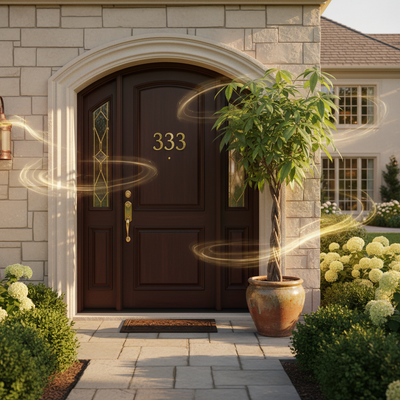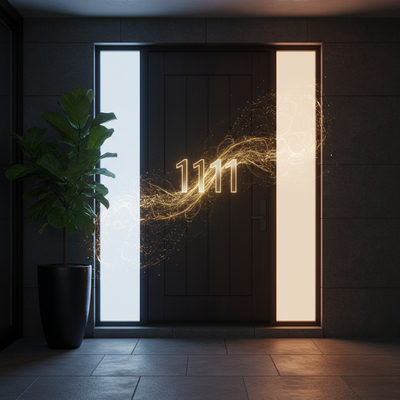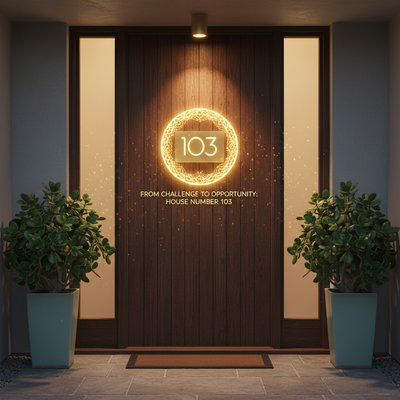Let's answer the main question right away. No, Feng Shui is not Japanese; it comes from ancient China. Many people get confused about this, which makes perfect sense. Both ideas try to create peaceful, balanced, and calming living spaces. They often look similar with their simple designs and natural elements. However, where they come from, how they work, and their basic ideas are completely different.
This guide will clear up this common mix-up. We will look at the real 4,000-year-old beginnings of Feng Shui, explain the different design ideas from Japan like Wabi-Sabi and Zen, and compare them side by side. Finally, we will show you how to combine these powerful ideas to create a home that looks beautiful and feels energetically positive.
Clearing Up the Confusion

To be completely clear: Feng Shui is a complex system of energy work that started in China. Japan has its own rich and unique design traditions based on ideas like Zen Buddhism. While both can create calm and beautiful rooms, they get there in different ways. One uses energy maps and balancing elements; the other uses an understanding of imperfection and simple living. Knowing this difference is the first step to using both correctly.
The Ancient Practice of Feng Shui
To really understand Feng Shui, we need to go back to where it started. It's not just an interior design trend but a deep and ancient art and science that's woven into Chinese culture.
Looking Back in Time
Feng Shui, which means "wind" and "water," began in China over 4,000 years ago. Its ideas come from Taoism, which teaches people to live in harmony with the natural flow of the universe, called the Tao. The first people who practiced Feng Shui, or Kan Yu as it was called then, studied the land, water, and stars to find the best locations for everything from burial sites to entire cities.
This isn't just stories; it's real history. The practice was so important that it was written down in ancient books. One of the most important is the "Book of Burial" (Zangshu), written by scholar Guo Pu of the Jin Dynasty (266–420 AD). This book explains the main idea that Qi, or cosmic energy, moves with the wind and spreads out, but stays when it meets water. The goal has always been to find or create places where this vital energy can gather and stay, helping the people who live there.
Main Feng Shui Ideas
Traditional Feng Shui is an organized system built on several key ideas. Understanding them is important to see how it's different from more feeling-based design ideas.
-
Qi (气): This is the basic concept. Qi is the invisible life force energy that gives life to all things. It flows through our bodies, our homes, and the natural world. The main goal of Feng Shui is to manage and improve the flow of positive Qi (Sheng Qi) in a space while avoiding or reducing negative Qi (Sha Qi). A home with good Qi flow feels lively, supportive, and healthy.
-
The Five Elements (五行): Feng Shui works with a system of five elements: Wood, Fire, Earth, Metal, and Water. These aren't just real materials but represent different types of energy. Each element has related colors, shapes, and materials. They work together in two main ways: a creative cycle (like Water helps Wood grow, Wood feeds Fire) and a destructive cycle (like Water puts out Fire, Fire melts Metal). A Feng Shui expert's job is to make sure these elements are balanced in a space to create harmony instead of conflict.
-
The Bagua (八卦): The Bagua is the energy map of Feng Shui. This eight-sided grid matches eight important areas of life: Wealth & Abundance, Fame & Reputation, Love & Marriage, Children & Creativity, Helpful People & Travel, Career & Life Path, Knowledge & Self-Growth, and Family & Health. By putting this map over a home's floor plan, you can identify which part of the home affects which part of life and make changes to improve or fix the energy there.
-
Yin and Yang (阴阳): Coming from Taoist philosophy, this is the idea of balance between opposites. It describes how seemingly opposite forces are connected and depend on each other. In design, this means balancing light and dark, hard and soft surfaces, open space and solid furniture, quiet areas for rest (Yin) and active areas for socializing (Yang). A harmonious home has a healthy balance of both.
The Heart of Simplicity
Now, let's move from China to Japan. Japanese design ideas, while sometimes looking similar to spaces designed using Feng Shui, come from a completely different source. They are less about specific energy rules and more about creating a certain feeling and honoring the natural world.
Beauty in Imperfection (Wabi-Sabi)
Wabi-Sabi (わびさび) is probably the most well-known Japanese design idea, but it's often misunderstood. Based on Zen Buddhist teachings, it's a way of seeing the world that focuses on accepting and appreciating things that don't last forever and aren't perfect. It's the beauty of things that are imperfect, temporary, and incomplete.
In design, Wabi-Sabi is not about creating a perfect, balanced room. It's the opposite. It finds beauty in a handmade ceramic bowl that's slightly uneven, a wooden table that shows its age, or a linen curtain that's naturally wrinkled. Its features include:
- Uneven and irregular shapes.
- Rough textures and simplicity.
- An earthy, quiet color palette.
- The use of natural, undecorated materials.
- An appreciation for objects with history and flaws.
A Wabi-Sabi home feels grounded, real, and peaceful. It gently reminds us that life isn't perfect, and there's deep beauty in that truth.
Path to Mindfulness (Zen)
Zen (禅) is a type of Buddhism that focuses on meditation (zazen) and intuition over religious texts. While Zen Buddhism came to Japan from China around the 12th century, it became a uniquely Japanese cultural force, deeply influencing everything from tea ceremonies to garden design.
Zen design is the physical form of Zen philosophy. Its goal is to create a space that calms the mind, encourages mindfulness, and removes all distractions. It's a style of extreme simplicity. Key features include:
- Minimalism: Only what's needed is present. Spaces are uncluttered and open.
- Clean Lines: Furniture and buildings have simple, strong, and clean shapes.
- Neutral Colors: Colors are usually single-toned, featuring shades of white, beige, grey, and black to promote calmness and not overstimulate the senses.
- Natural Light: Making the most of natural light is important to connect the inside with the outside world.
- Order and Function: Every object has a purpose and a place, creating a sense of calm and order.
A Zen-inspired space is a refuge from the noise of the modern world, designed to support thinking and peace.
Essence of Clarity (Kanso)
Kanso (簡素) is one of the seven principles of Zen design and is closely related to minimalism. It means simplicity or getting rid of clutter. However, Kanso isn't just about having fewer things. It's a principle of clarity and essence. It's about expressing ideas and functions in the most straightforward, undecorated way possible.

In practice, Kanso means looking at an object or a room and asking, "What can be removed?" It's the discipline of reducing things down to their pure, essential function and form. This principle is what gives Japanese design its feeling of effortless grace and clarity.
Feng Shui vs. Japanese Design
While both paths can lead to a harmonious home, their guiding ideas, tools, and uses are very different. Feng Shui is a specific system focused on changing invisible energies for particular life results. Japanese design ideas are descriptive philosophies focused on creating a particular feeling or state of being.
Philosophy and Use
The main difference is in purpose. A Feng Shui consultant looks at a space to find and fix energy problems affecting health, wealth, or relationships. They use specific tools like the Bagua map and the Five Elements theory to suggest "fixes." A Japanese-inspired designer, in contrast, creates a space to bring about a feeling of calm (Zen) or an appreciation for natural imperfection (Wabi-Sabi). The approach is more feeling-based and philosophical than rule-based.
Comparison Table
This table shows the key differences between these powerful traditions.
| Feature | Feng Shui (Chinese) | Wabi-Sabi (Japanese) | Zen Design (Japanese) |
|---|---|---|---|
| Primary Goal | To improve the flow of positive energy (Qi) for health, wealth, and happiness. | To embrace and find beauty in imperfection, temporary things, and the natural cycle of life. | To create a calm, uncluttered environment that supports mindfulness and meditation. |
| Core Method | Specific placement using tools like the Bagua map and Five Elements theory. | Feeling-based appreciation of aged, natural, and flawed objects. | Extreme minimalism and removing all non-essentials. |
| Approach to Objects | Fixes and improvements (crystals, mirrors, fountains) are used to correct or boost energy. | Values objects with history, aging, and natural flaws (like a cracked ceramic bowl). | Focuses on function and form; objects are few but chosen with extreme care. |
| Use of Color | Specific colors are used in specific areas to activate elements (like red for fame). | Quiet, earthy, and natural color palette from nature (greys, browns, greens). | Neutral and single-color palettes (white, beige, grey, black) to promote calmness. |
| Symmetry | Often seeks balance and a form of symmetry in placement. | Celebrates uneven and irregular shapes as more natural and interesting. | Emphasizes clean lines and order, but not necessarily strict symmetry. |
Combining Both Worlds
Now for the most exciting part: you don't have to choose. By understanding the main principles of each, you can skillfully blend Feng Shui and Japanese design to create a home that is not only visually stunning and calm but also energetically aligned and supportive.
A Shared Foundation
The beautiful truth is that blending these philosophies is natural because they share common ground. Both traditions value:
- Intention: Choosing every item in your home with purpose.
- Decluttering: Understanding that physical clutter creates mental and energetic stagnation.
- Connection to Nature: Bringing natural materials, light, and elements indoors.
This shared foundation of mindfulness is the perfect starting point for a harmonious combination.
Practical Blending Steps
Here is a practical, step-by-step guide to creating a space that honors both the energy of Feng Shui and the soul of Japanese design.
-
Start with Decluttering (A Shared Principle)
This is the first and most important step for both philosophies. From a Zen and Kanso perspective, you are removing the non-essential to create clarity and peace. From a Feng Shui perspective, you are clearing stagnant Qi and making space for fresh, vital energy to flow. Be firm. Let go of anything you do not love or use. This one act serves both masters perfectly. -
Build a Wabi-Sabi Foundation
Instead of starting with a complex Feng Shui color map, begin by creating a calm, neutral canvas. Use the Japanese style as your base. Choose a palette of earthy, quiet tones—whites, beiges, greys, and soft browns. Select furniture and fabrics made from natural materials like wood, stone, bamboo, linen, and cotton. This creates the calm, uncluttered, and nature-connected backdrop that is central to Zen and Wabi-Sabi. -
Layer in Feng Shui with Subtlety
Once you have your minimalist, natural foundation, you can apply the Feng Shui Bagua map with a gentle touch. You don't need to compromise your style with loud or obvious "fixes."- Example: For the "Fame and Reputation" area (which corresponds to the Fire element and the color red), you don't need a large red wall. Instead, introduce a single, beautifully crafted candle in a deep red ceramic holder, a piece of abstract art with subtle red tones, or a lamp with a warm, fiery glow.
- Example: For the "Wealth & Abundance" corner (Wood element), forget the typical "money frog." Instead, place a single, healthy, vibrant plant in a beautiful, handmade ceramic pot. The upward growth of the plant represents the Wood element and the energy of expansion in a way that is both powerful and aesthetically pleasing.
-
Balance the Five Elements Naturally
You can balance the Five Elements without using any traditional Feng Shui items. Use natural objects that fit perfectly within a Wabi-Sabi or Zen style.- Wood: A piece of reclaimed driftwood on a shelf, a simple bamboo plant, or your wooden furniture.
- Fire: The gentle flicker of candlelight, warm-toned woods like cherry, or sunlight streaming through a window.
- Earth: Unglazed ceramic pots, a collection of river stones, or a wool rug.
- Metal: A simple brass tray, a sleek metal lamp, or objects in white, grey, or metallic colors.
- Water: A small, dark-colored bowl filled with water and a single floating petal, or a piece of art showing a calm water scene.
Seeking Professional Guidance
While these tips provide a fantastic starting point, blending these two sophisticated systems skillfully can be complex, especially in homes with challenging layouts or when facing specific life obstacles. This is where a deep understanding of Qi flow becomes critical. For instance, in a recent project with a client who loved Japanese minimalism but was struggling with career stagnation, our team at THE QI FLOW didn't suggest adding clutter with traditional cures. Instead, we analyzed their home's energy map and recommended a subtle shift: moving their sleek, metal-and-wood desk to their personal 'Success' direction and introducing a single, powerful piece of art with upward movement to activate the Water element in their Career gua. The solution honored their style while producing real results. Blending these philosophies skillfully is a skill that our experts specialize in, ensuring your home is both beautiful and energetically supportive.
Embracing Your Harmony
We began with a simple question: is feng shui japanese? The answer is a clear no. Feng Shui is an ancient and powerful Chinese system for aligning the energy in your environment to support your life goals. Japanese design ideas like Wabi-Sabi and Zen are philosophies focused on creating a mental and spiritual state of peace through simplicity, mindfulness, and an appreciation for natural imperfection.
They are different traditions with different tools and goals. Yet, they are not mutually exclusive. As you have seen, their shared respect for nature, intention, and simplicity allows them to be beautifully woven together.
You now have the knowledge to tell these concepts apart and use them correctly. Whether you are drawn to the specific power of Feng Shui, the soulful simplicity of Zen, or a personal blend of both, the ultimate goal is the same. The most important principle is to create a sanctuary that you love, a space that calms your mind, nourishes your spirit, and feels like a true reflection of you. Your home should be the place where you feel most at peace.
